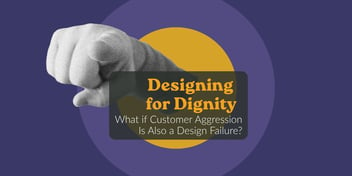In Short
Discover how gamification is the game-changing solution to low engagement in health and safety software. By tapping into human drivers like competition and the desire for progress, gamification transforms safety from a regulatory obligation into a rewarding, visible team sport, leading to lasting cultural change and measurable safety outcomes.
Get fresh H&S insights weekly
You can have the most intuitive health and safety software out there, the kind that makes reporting and communication utterly painless. It's the sleekest, most feature-rich system money can buy.
But the unfortunate truth is that even with the most cutting-edge technology, you can hit a wall.
The engagement wall, that is.
It’s the bane of safety professionals everywhere! You have the perfect tool, the insights are crystal clear, but the people just aren’t using it. The process feels like an obligation, not an invitation.
Recently, ecoPortal was lucky enough to hold our second ever ePIC conference in Auckland, New Zealand, where we saw two innovative organisations tackling this very issue. They showed how they broke past the tech barrier using one simple idea: gamification.
Making Safety Fun? Really?
Let’s be clear about gamification. It’s not about turning your workday into an arcade. It’s about taking basic, satisfying human drivers and applying them to workplace learning. The goal is to help people form an emotional link to what they are doing, moving past dry intellect and rote compliance.
In safety, this changes everything. Instead of demanding compliance because "it's the rule," you invite people to engage out of curiosity and involvement. They start owning the outcomes because they can immediately see the positive effects of their actions, both for themselves and the team.
When this happens, the old top-down safety model collapses.
Gamification in Transport and Logistics Safety
A great example of using gamification to boost engagement in health and safety comes from a transport and logistics company known for its strong competitive culture.
Instead of forcing compliance, they’ve created multi-faceted, high-impact campaigns designed to make health and safety something their teams proactively take part in. They turned safety into a visible, rewarding team sport.
These campaigns were created to address the three most significant risks in their business: forklift incidents and falling freight — each with the potential for a fatal outcome — and manual handling, which was the single biggest source of lost time, pain, and recurring injuries.
They designed these initiatives on three key tenets: make it fun, incentivise engagement, and make it competitive.
The goal was to break down the barrier to safety by making it enjoyable and easily digestible, coaxing people into learning by tapping into their natural desire to have a good time and win.
In one of these campaigns, the grand prize was not just gift cards and trophies, but the ultimate bragging rights: having their most safely-driven forklift painted gold for the entire year. That’s a prize that truly speaks to an operational environment! It's a loud, visible symbol of success that everyone on the floor sees every single day.
The outcomes of this approach were truly remarkable. In 2024, the company saw a 28% reduction in lost time injuries compared to the previous year.
Where Technology and Safety Culture Meet
Software excels at making reporting faster, surfacing clear insights, and making sure no detail slips through the cracks. But let’s be clear: no system can spontaneously generate a thriving safety culture.
The genuine change begins when teams take the data and feedback from the software and use it to ignite real conversations. A dashboard might show that engagement is up 15%, but the progress happens when those insights are celebrated. When people see their effort recognised, they begin to link safety not with obligation, but with genuine pride.
That's where technology and culture finally sync up.
The Psychology of Success
Gamification succeeds because it cleverly taps into the motivation we already have. Look, we all like to see progress, right? We also want to know our work has a purpose. Getting clear feedback and recognition builds confidence and makes the whole learning process feel worthwhile.
For any campaign to work, however, it must remain grounded in real experience. The activities can't feel like an artificial distraction; they need to reflect the genuine realities of the job, and the outcomes must feel meaningful.
The most successful examples are those that fit naturally into the rhythm of the organisation, supporting existing safety conversations rather than trying to overwrite them.
This brings us to another success story.
How an Automotive Group Used Gamification to Improve Safety
An automotive group, faces the challenge of safety in a decentralised business with many branches, each with their own CEO. Their challenge was simple: how do you drive consistent, high-level safety performance across multiple independent profit centres?
One of their solutions was the Safe Cup. They took the structure of their existing, highly coveted internal awards and applied it to safety performance.
As an audit incentive, if a branch is one of their top dealerships for safety performance and compliance, they go in the running to win the Safe Cup. Again, this is a new thing, but the company has found, the dealerships are highly competitive with each other. This cup has instantly become a really awesome thing to win.
Turning Numbers into Action
Every time an employee actively takes part in a safety activity, the data tells a story. This information shows how engaged people are and where improvements are needed.
For safety leaders, this information is gold, offering a measurable way to track participation and culture change over time. But the numbers, by themselves, are inert. Their immense value only emerges in how they are interpreted and shared.
Technology collects the information, yet people give it meaning. The leadership that discusses results openly, and the teams that act on those insights, are what turn a set of figures into real, tangible safety outcomes.
Gamification as a Catalyst for Connection
Let's not mistake gamification for a magic bullet. It doesn't replace solid safety strategy, strong leadership, or an established culture. Instead, it enhances them. It acts as a powerful catalyst, bringing focus and energy to areas that, frankly, might otherwise drift into irrelevance. It gives people an immediate, accessible entry point to get involved and stay committed.
The examples at ePIC 2025 proved this point perfectly. Both organisations used digital tools to spark interaction, but their ultimate success wasn't measured in clicks; it was measured in the quality of the conversations that followed.
Beyond Safety Software: Building a Culture of Commitment
As workplaces continue their rapid evolution, gamification is poised to play an increasingly vital role in keeping health and safety engaging and relevant. But technology can't carry the message alone.
Software can guide the process and provide valuable insight. Yet it is the commitment beyond the platform that transforms a system into something truly meaningful.
When people see themselves as an essential part of the story, safety transcends being a mere process. It becomes a vivid reflection of how an organisation thinks, communicates, and truly takes care of its people.
That's where the real, lasting progress begins.
Key Takeaways
-
Gamification transforms safety from a mandatory chore into an engaging activity by leveraging natural human motivators like competition and recognition, leading to genuine employee ownership of safety outcomes.
-
The most successful gamification initiatives focus on creating a direct link between the activity and significant, real-world business risks, using contextually meaningful incentives to drive specific safety improvements.
-
While technology serves as a vital platform for data and interaction, the true measure of success is when leadership uses these insights to foster a positive safety culture through public recognition and the celebration of effort.
To further your organisations health and safety management, check out our Health & Safety Management Software and book a demo today!




.png?width=352&name=Psychosocial%20Safety%20(2).png)

.png?width=352&name=Rethinking%20Health%20%26%20Safety%20in%20NZ%20(1).png)

